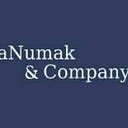Supply Chain Control Tower
In today’s competitive business environment, institutions that deal with the changing and developing customer demands in the usual supply chain structure develop a new perspective and create new processes to participate in this race. In the supply chain structure; The increase in global production activities, the increase in production facilities, etc., have made the process both complex and unmanageable or uncontrollable. Various solutions and methods have been created for these complicated processes or activities, evolving from the past to the present.
What function does the supply chain tower have at this point?
The Supply chain control tower is a connected, personalized dashboard containing data, key business metrics, and events across the supply chain. The supply chain control tower allows companies to simultaneously understand, prioritize and resolve critical issues. At this point, supply chain managers are under tremendous pressure to optimize their supply operations and achieve cost-effective targets while providing customers’ needs anytime, anywhere.
So what features should an intelligent supply control tower have?
1. It should provide end–to–end visibility.
2. It should leverage advanced technologies such as artificial intelligence to help you reduce or eliminate processes.
3. It should protect corporate information to enable collaboration between teams and solution partners and improve and accelerate decision-making ability and gains.
As a result, it helps you spot problems, increases costs, manage any condition and be prepared for unplanned events.
The business processes of each company and the solution need to optimize these processes differ. For this reason, it is tough for ready-made solutions in the market to provide an adequate response to all requests of a company. At this point, the supply chain tower comes into play and offers these solutions to you quickly and practically.
These opportunities can be listed as follows;
1. Can predict trends,
2. To be able to measure market changes by comparing them with previous reference periods,
3. Ensuring that observations and decisions about performance are made available to all stakeholders, etc.
Click for more information on this topic;
